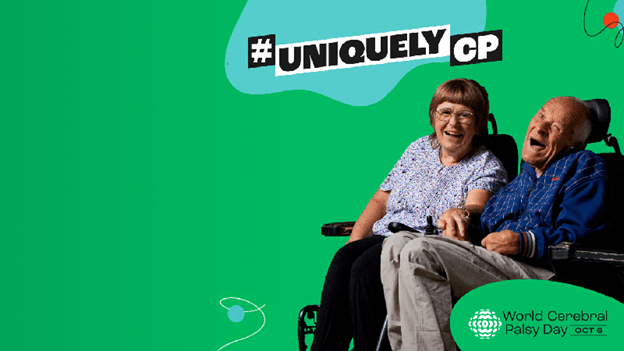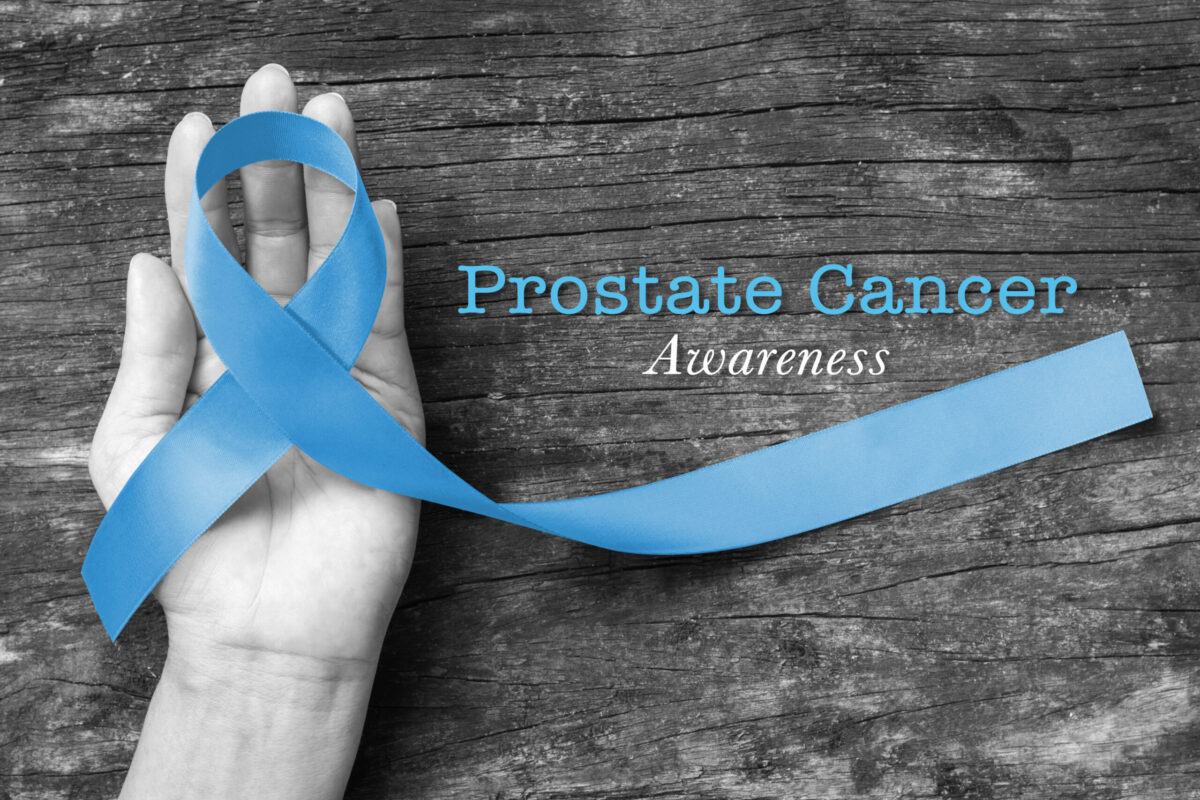October 6 is World Cerebral Palsy Day, an annual global event that helps raise awareness about cerebral palsy, and celebrate the lives and accomplishments of individuals living with the condition. Many will wear green to celebrate World Cerebral Palsy Day 2024.
The theme of this year’s World Cerebral Palsy Day is “Uniquely CP,” which encourages individuals with the condition, their family members and supporters to share stories about their achievements and passions, highlighting how cerebral palsy contributes to each person’s uniqueness.
The worldwide initiative began in 2012 and in the past year, it connected with over 10 million individuals. The movement seeks to unite those living with cerebral palsy, their families, supporters and organizations from more than 100 countries. Its primary goal is to advocate for a future where children and adults with cerebral palsy enjoy the same rights, access and opportunities as everyone else.
It is also a day to remind us about the importance of advocating for the rights of those affected and promoting initiatives that improve their quality of life. The day serves as a vital reminder of the challenges faced by individuals with cerebral palsy and the importance of community support, education and research.
Over 17 million people worldwide are living with cerebral palsy, while an additional 350 million individuals are closely connected to a child or adult with the condition.
Understanding Cerebral Palsy
Cerebral palsy is a group of neurological disorders that affect movement, posture and coordination caused by abnormal brain development or damage to the developing brain, often occurring during pregnancy, childbirth or shortly after birth. It is the most common motor disability in childhood, impacting a person’s ability to control their muscles.
Cerebral palsy can manifest in various forms, affecting mobility, communication and daily living activities.
Despite its prevalence, awareness of cerebral palsy remains limited. It is estimated that one in every 345 children is diagnosed with cerebral palsy, yet many people do not understand the condition, its causes or its implications for individuals and families.
Cerebral palsy is a complex disability that can affect different parts of the body and affect people differently. One in four children with cerebral palsy cannot talk, one in four cannot walk, one in two have an intellectual disability and one in four have epilepsy.
At least two-thirds of children with cerebral palsy experience movement difficulties that affect one or both arms, and nearly every daily activity can be significantly impacted.
World Cerebral Palsy Day: Raising Awareness
World Cerebral Palsy Day is an opportunity to unite people globally in raising awareness, driving advocacy and promoting inclusivity for individuals with cerebral palsy. This day encourages us to take meaningful steps toward improving understanding, support and resources for the cerebral palsy community, which include:
- Education: By providing information about cerebral palsy, we can dispel myths and misconceptions. Understanding the condition is essential for fostering empathy and support for those living with it.
- Advocacy: The day serves as a platform to advocate for policies and programs that support individuals with cerebral palsy and their families. It highlights the need for accessible healthcare, education and employment opportunities.
- Community Support: Building a supportive community is vital for those affected by cerebral palsy. Awareness initiatives encourage families and caregivers to connect with resources, support groups and services that can make a significant difference in their lives.
- Research and Development: Increased awareness can lead to greater funding and support for research aimed at improving treatments and therapies for cerebral palsy. Research is crucial for enhancing the quality of life for those affected and discovering innovative solutions.
Treatments for Cerebral Palsy
Cerebral palsy is a complex condition that requires a multidisciplinary approach to treatment. While there is currently no cure for the condition, various therapies and interventions can help manage symptoms, improve quality of life and enhance mobility. Here’s an overview of some common treatments for cerebral palsy.
Physical Therapy
Physical therapy focuses on improving movement, coordination and strength. It may include exercises to enhance muscle tone and flexibility, as well as techniques to improve balance and mobility. Therapists often use assistive devices like braces or walkers to support mobility.
Occupational Therapy
Occupational therapy helps individuals with cerebral palsy develop daily living skills, such as self-care, feeding and writing. Therapists may suggest adaptive tools to make tasks easier and promote independence.
Speech and Language Therapy
Speech therapy assists individuals with communication difficulties related to cerebral palsy. Therapists work on speech production, language skills and alternative communication methods, such as using communication devices.
Medications
Medications can help manage specific symptoms associated with cerebral palsy.
Muscle relaxants (e.g., baclofen, diazepam) can help reduce spasticity and are used to help relax muscles.
Anticonvulsants are used to control seizures, which can be common in individuals with cerebral palsy.
Botulinum toxin (Botox) injections can temporarily reduce muscle spasticity by tightening muscles in specific areas.
Surgery
In some cases, surgical interventions may be recommended to address specific issues.
Orthopedic surgery procedures can correct bone and joint problems caused by muscle imbalances or spasticity.
Selective dorsal rhizotomy is a surgical procedure that involves cutting specific nerves in the spinal cord to reduce spasticity in the legs.
Assistive Devices
Assistive devices, such as wheelchairs, crutches and splints, can enhance mobility and independence. These tools are tailored to the individual’s specific needs and abilities.
Alternative Therapies
Some families explore alternative therapies to complement traditional treatments.
Aquatic therapy is conducted in water, which can reduce strain on muscles and joints.
Yoga and pilates can improve flexibility, strength and overall well-being.
Music and art therapy as well as other creative therapies can provide emotional support and enhance communication skills.
Supportive Services
Families often benefit from counseling, support groups and educational services that provide resources and community connections for individuals with cerebral palsy and their caregivers.
Latest Research on Cerebral Palsy
Recent research on cerebral palsy has produced promising developments that could enhance treatment and understanding of the condition.
Reactivation of Dormant Neural Stem Cells
A study from Duke-NUS Medical School has identified a pathway involving astrocytes that can awaken dormant neural stem cells in the brain. This could lead to the creation of new neurons, offering hope for therapies aimed at treating neurodevelopmental disorders, including cerebral palsy.
Using Drosophila or fruit flies, the researchers discovered that astrocytes release a signaling protein, Fog, which activates the Formin protein pathway, facilitating actin filament movement essential for neural stem cell division and brain repair.
Whole-Genome Sequencing Reveals Genetic Causes of Cerebral Palsy
Canadian researchers have unveiled significant genetic factors that may contribute to the development of cerebral palsy.
Conducted by scientists from the Research Institute of the McGill University Health Centre (RI-MUHC), the Hospital for Sick Children (SickKids) and Holland Bloorview Kids Rehabilitation Hospital, the research findings suggest that multiple genetic variants may play a role in cerebral palsy, which has traditionally been associated with environmental factors such as infections, injuries or oxygen deprivation during birth.
Published in Nature Genetics, the seven-year study revealed that over 11 percent of children with cerebral palsy had a genetic variant or a likely genetic variant associated with their condition. Additionally, 17.7 percent of the participants carried variants of uncertain significance that may also be linked to cerebral palsy, pending further investigation.
Notably, many of these genetic variants overlapped with those found in other neurodevelopmental disorders, including autism spectrum disorder (ASD), which is commonly observed in children with cerebral palsy.
Magnesium Sulfate for Neuroprotection During Childbirth
According to a Cochrane review and an editorial by University of Bristol professor Karen Luyt, administering a simple magnesium sulfate infusion to women at risk of premature birth can help prevent their babies from developing cerebral palsy.
In light of these findings, Professor Luyt is advocating for broader and more equitable implementation of this intervention, as it remains inconsistently available around the world.
The Prevention of Cerebral Palsy in Pre-Term Labour (PReCePT) program in England has successfully implemented magnesium sulfate as a treatment for at-risk mothers, significantly reducing the incidence of cerebral palsy in premature babies. Between 2018 and 2023, the program administered this drug to over 14,000 women, leading to approximately 385 fewer cases of cerebral palsy.
World Cerebral Palsy Day 2024: How You Can Get Involved
There are many ways to participate in World Cerebral Palsy Day 2024 and contribute to the movement:
- Educate Yourself and Others: Take the time to learn about cerebral palsy and share your knowledge with friends, family and colleagues. Use social media platforms to spread awareness and educate your community.
- Support Local Organizations: Find local organizations that focus on cerebral palsy and related disabilities. Volunteer your time, donate or participate in fundraising events to help support their initiatives.
- Participate in Events: Many communities host events such as walks, runs and educational seminars to mark World Cerebral Palsy Day. Join these events to show your support and connect with others.
- Advocate for Change: Reach out to policymakers and advocate for laws and regulations that support the rights of individuals with cerebral palsy. Use your voice to promote inclusion and accessibility in your community.
World Cerebral Palsy Day is more than just a day of recognition, it is a call to action for individuals, families and communities worldwide. By raising awareness, advocating for change and supporting those affected by cerebral palsy, we can create a more inclusive society where everyone has the opportunity to thrive.
If you want your company to be featured on Xtalks.com, please email [email protected].












Join or login to leave a comment
JOIN LOGIN